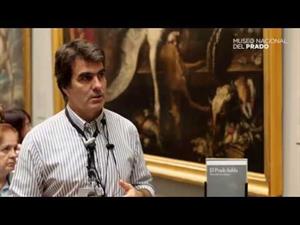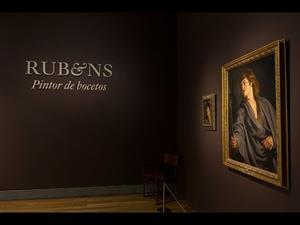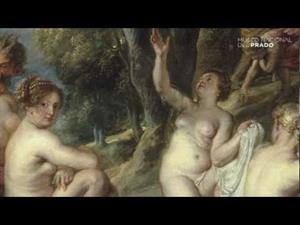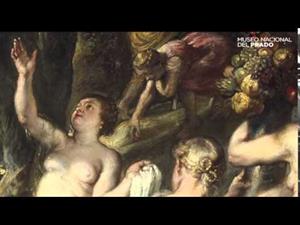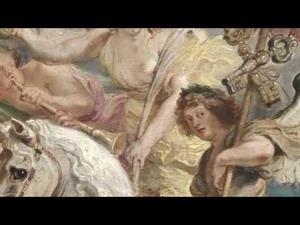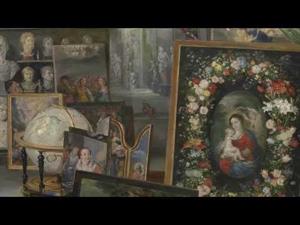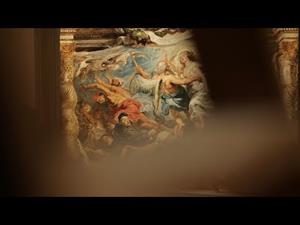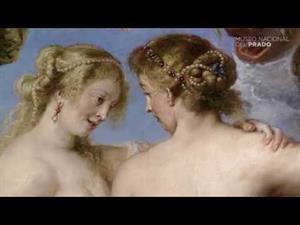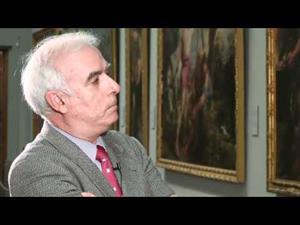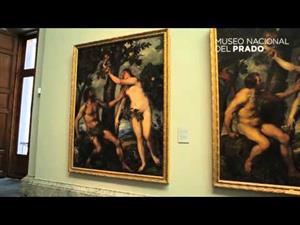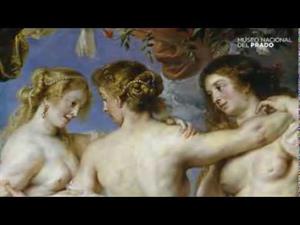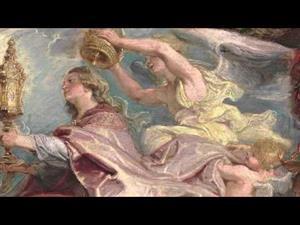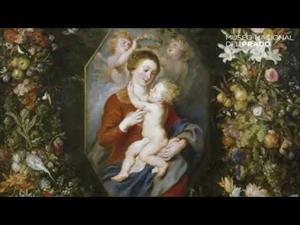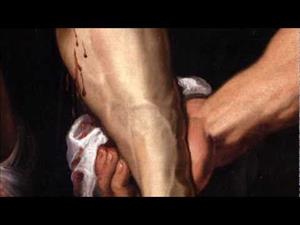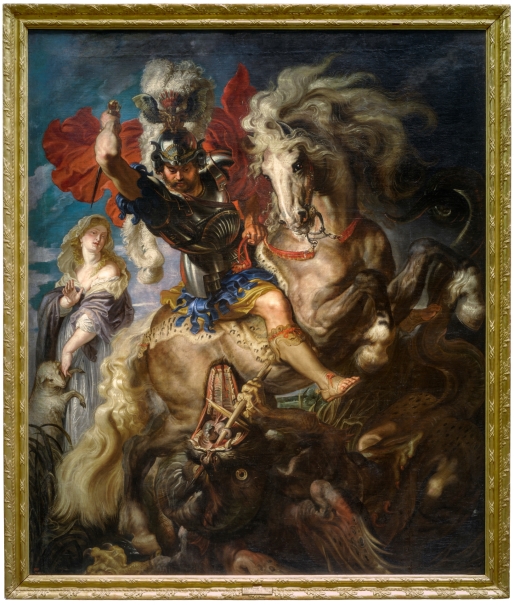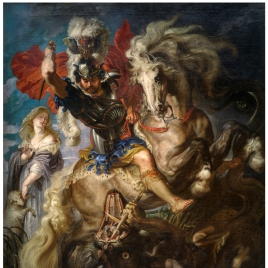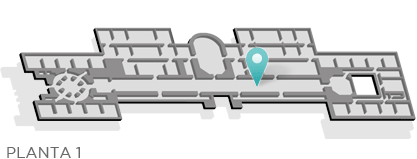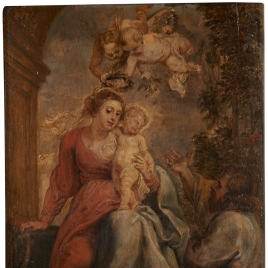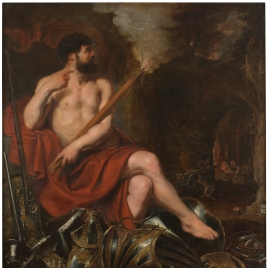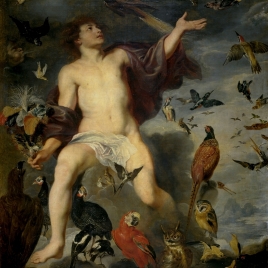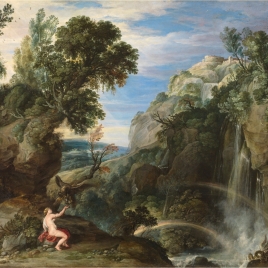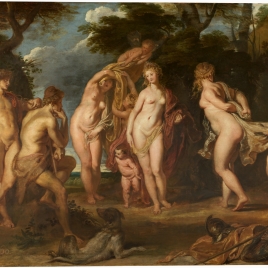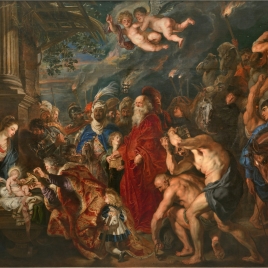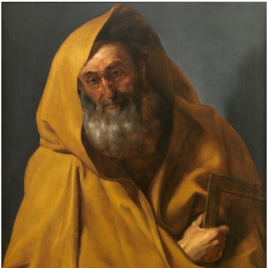Saint George and the Dragon
1606 - 1608. Oil on canvas.Room 028
The tale of Saint George and the Dragon was popularised by the writer Jacopo della Voragine in his Golden Legend. It tells of the arrival of St. George ain Silca, a city of Libya, where there was a large lake inhabited by a dragon, to whom the people threw two sheep a day as food in order to appease the monster´s wrath. When the sheep ran out, they began to sacrifice the inhabitants of the town, chosen by lot; eventually, it was the turn of the king´s daughter. On her way, she met Saint George who saved her: ‘(...) he drew his lance and, making it vibrate in the air and spurring his horse, he went towards the beast (...) when he had it within reach, he plunged the weapon into its body and wounded it’. The people were converted to Christianity inspired by the feat of St George.
Rubens depicts the moment in which Saint George threatens the dragon with his sword. The beast appears in monstrous form, eyes wide open, it grasps the lance with which the saint has pierced its mouth. In the background is the princess, richly dressed as described by J. della Voragine, holding the sheep with which she was to be sacrificed. Several preparatory drawings have survived for the composition. According to the specialist H. Vlieghe, it may have been based on a sketched copy of Titian made by the artist himself, and now kept in the Graphische Sammlung in Munich. The works original purpose is unknown. The historian D. Jaffe thinks it may have been made for the city of Genoa, whose patron saint is Saint George.
Dating from his Italian years, it reveals the study of classical statues and Michelangelo´s figures, with rotund, majestic and strong figures. Saint George embodies these characteristics, depicted almost like a Roman general in command of his armies. One of the most outstanding elements of the canvas is the horse, which occupies a large part of the composition, generating a wide diagonal that provides movement to the scene. Rubens painted the drool from the horses’ mouth, with a minute attention to detail in reference to the Classical Age in which Pliny the Elder, described the work of the painter Zeuxis as fooling birds into pecking at the grapes he had painted.
It is an example of the connection between Rubens and classical antiquity, in which he saw reflected the values of the ideal society, and ideal of beauty more perfectly realised. The exaltation of life, a concept of antiquity, is magnified in this image in which Rubens re-employs a template of the classical world to represent a religious episode. Rubens always sought to unite and mutually enrich the two worlds. This work was acquired after Rubens´s death in June 1640, when the artist’s family put his possessions and paintings up for sale, attracting buyers from all over Europe who flocked to buy them. Philip IV had the perfect opportunity to not only augment Spain’s collection of Rubens´s paintings, but also to acquire works by other Flemish artists, such as Van Dyck, which the artist treasured in his own collection. The Infante-Cardinal Don Fernando, the king´s brother and governor of the southern Low Countries at the time, sent many letters to his brother. The monarch´s intention to acquire works at this auction is revealed in said correspondence. Thus in September 1640 Don Fernando wrote: ‘(...) the works that Rubens has in his house are many and very good, and so as not to make mistakes and to better suit Your Majesty´s taste, I send you this list of them all, so that you may order me whatever you wish, as there is no danger in waiting for Your Majesty´s reply because they want to print this list and send it all over Europe’. The valet Francisco de Rojas was in charge of the purchase.
This one, numbered 155 and entitled ‘A Saint George on a Horse with a Cloak’ is considered by J. M. Muller to be the earliest painting by Rubens in his collection.




